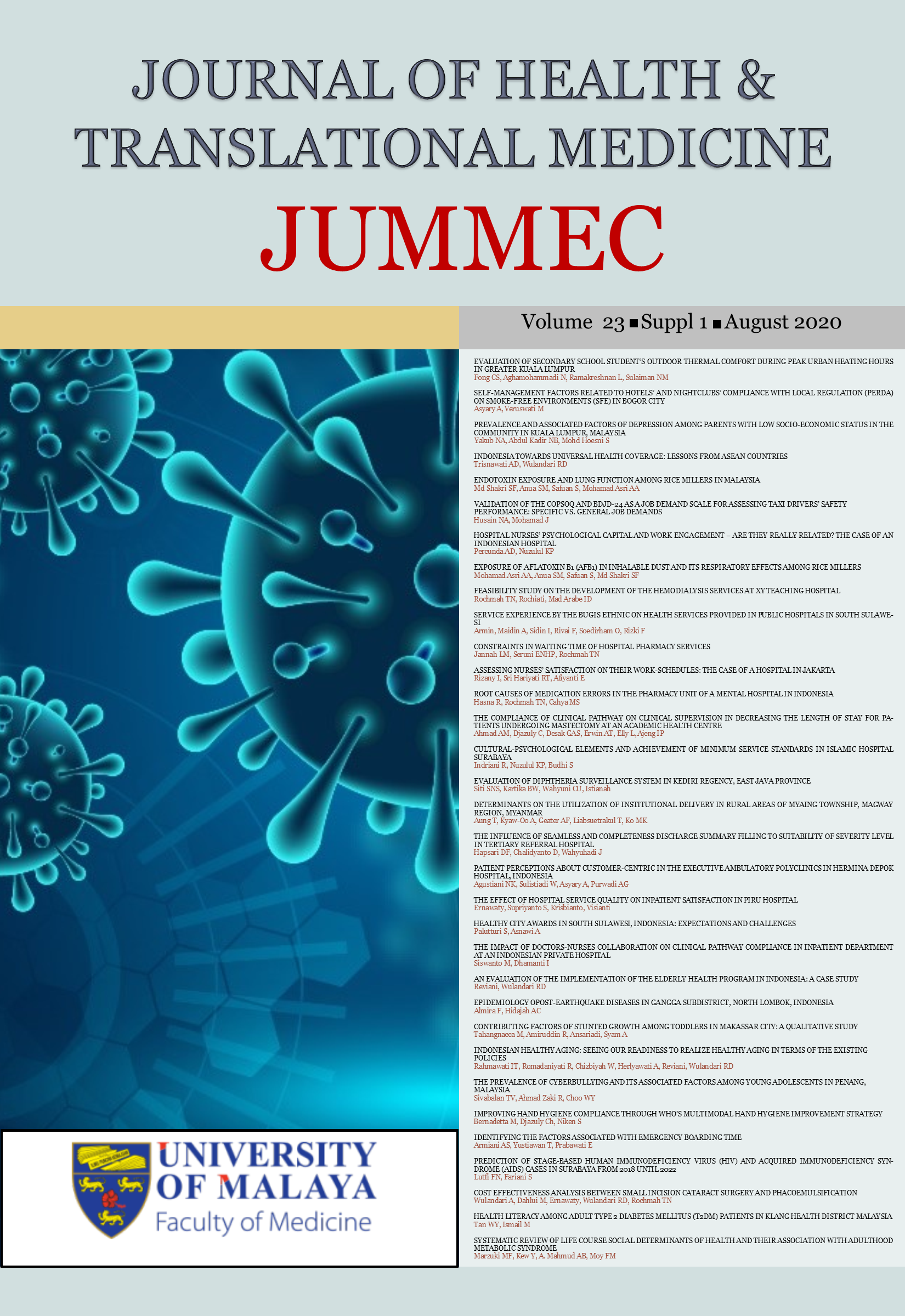IMPROVING HAND HYGIENE COMPLIANCE THROUGH WHO’S MULTIMODAL HAND HYGIENE IMPROVEMENT STRATEGY
Keywords:
Hand Hygiene Compliance, WHO Multimodal Hand Hygiene strategyAbstract
Introduction: Hand hygiene compliance of Health Care Workers (HCW) in Indonesia for the year 2014 was only 73.34%, a rate that was much lower than WHO’s recommended standard. This is indication that there is a need to implement quality improvement. In 2015, the WHO’s multimodal hand hygiene improvement strategy was implemented in all units or wards of hospitals as a measure to improve Hand Hygiene among healthcare workers. This paper aims to demonstrate the improvement of hand hygiene compliance amongst HCWs in hospitals by using the WHO multimodal hand hygiene improvement strategy.
Materials and Methods: This study is cross sectional involving observations performed of different HCWs in the hospital site. Quantitative in design, this study is supported by the chi-square analysis which helps to determine the significance of hand hygiene compliance improvement among healthcare workers in Indonesian hospitals. The WHO’s multimodal improvement strategy which comprised system change initiatives, training and education, evaluation and feedback, reminders in the workplace, and institutional safety climate was applied.
Results: The hand hygiene compliance was collected through observations in one private hospital at West of Indonesia by using the hand hygiene audit form. The monthly hand hygiene audit compliance was conducted from 2014 involving a total number of 2233 observations comprising 31267 opportunities of hand hygiene compliance. In 2017, a total of 4466 observations were recorded, involving 6246 opportunities of hand hygiene compliance. The hand hygiene compliance varied between, 78% to 92% for each unit or wards being observed. The highest compliance was noted in the critical care ward. In terms of profession, the highest compliance was observed by the health care assistants (HCA). Hand hygiene compliance was found to increase significantly, from 73.34% in 2014 to 91.8% in 2017 (p<0.0001).
Conclusion: Implementation of the WHO’s multimodal hand hygiene improvement strategy had increased the hand hygiene compliance of healthcare workers in the Surabaya hospital significantly.
Downloads
Downloads
Published
Issue
Section
License
All authors agree that the article, if editorially accepted for publication, shall be licensed under the Creative Commons Attribution License 4.0 to allow others to freely access, copy and use research provided the author is correctly attributed, unless otherwise stated. All articles are available online without charge or other barriers to access. However, anyone wishing to reproduce large quantities of an article (250+) should inform the publisher. Any opinion expressed in the articles are those of the authors and do not reflect that of the University of Malaya, 50603 Kuala Lumpur, Malaysia.


